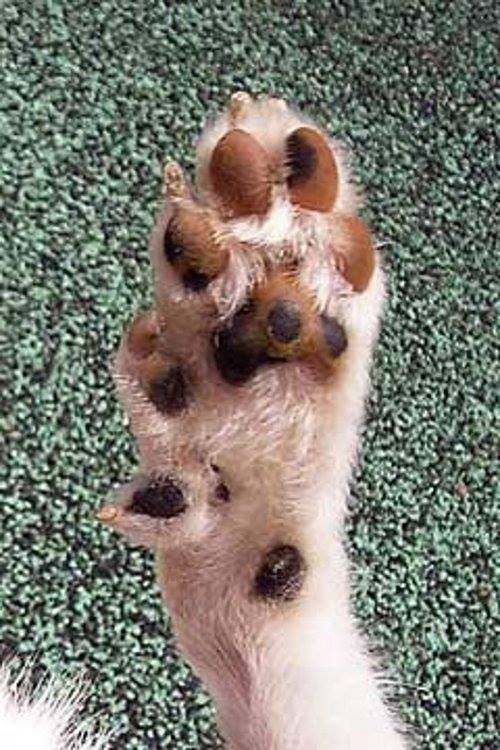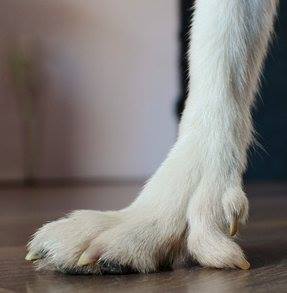
Behold the majesty of the Norwegian Lundehund foot. It has six fully developed toes, five of which reach the ground. There are eight pads on each front foot, while additional toes consist of one three-jointed toes, like a thumb, and one two-jointed toe. The rear feet have a minimum of six toes, of which four support the dog’s weight. The rear feet have seven pads with the center pad elongated.

Wow. But why?
 Polydactylism (having extra toes) was selectively bred into the Lundehund to enhance its grip and stability on the steep cliffs where Puffin colonies nested. This unique foot structure enables the dog to get tremendous traction in tight spaces and to support and brace itself on uneven or unstable terrain while being able to brake on slippery or uneven terrain. Wow.
Polydactylism (having extra toes) was selectively bred into the Lundehund to enhance its grip and stability on the steep cliffs where Puffin colonies nested. This unique foot structure enables the dog to get tremendous traction in tight spaces and to support and brace itself on uneven or unstable terrain while being able to brake on slippery or uneven terrain. Wow.
Photo credits: “Tommy” by Anneli Rosenberg (Anneli Kennel Eriksro) and “Ski” Tracy Rousseau

One thought on “Polydactylism!”